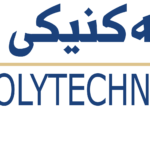- Sally Afram Polus
- [email protected]
- 0750 766 6511
- Ph.D._Sally Afram Polus
-
A solar tracking system with an effective cooling technique is developed
and implemented in this study, because the solar irradiance, temperature and
dusty climate condition affected on the output of photovoltaic panel. A single
east-west solar tracking system incorporating a monocrystalline panel and a
front surface spray water cooling system was conducted and compared to a
fixed reference panel with an inclination angle 36° facing south. An appropriate
cooling system was developed with six nozzles placed on top, left and right
side of the panel, to ensure that the panel’s front surface is covered with water
from all orientations. Two different types of spray water cooling were
performed; first by adjusting the panel surface temperature (35 °C, 40 °C and
45 °C), through adjustable water flow rate, and the second was fixing the water
volume flow rate at (2 l/min, 3 l/min, 4 l/min and 5 l/min). This experiment was
conducted during the summer season of the year 2022 in Erbil, Iraq (latitude
36.191° and longitude 44.009°).
A simulation study was also conducted using ANSYS Fluent R19.2. The
experimental study demonstrated a maximum electrical efficiency
improvement reaching 9.9% which was recorded as an enhancement compared
to the fixed reference panel by using the solar east-west tracking system. While
tracking with a cooling system at 35 °C set point temperature has resulted in an
improvement in efficiency up to 25.11%. Another parameter that has been
optimized is the cooling water consumption. The optimal cooling setting
temperature was determined at a surface temperature of 40 °C. Alternatively,
upon the incorporation of a cooling system to the PV panel at setpoint
temperatures of 45 °C, 40 °C, and 35 °C, without the integration of a solar
tracking system, improvements of 18.25%, 19.94%, and 22.82% were achieved
in electrical efficiency, respectively. When the solar radiation exceeds the
power at standard operating conditions, even if the panel temperature is higher
VIII
than that of the standard test, the PV panel is able to produce the same power
as the standard test of 210 W. Additionally, integrating a solar tracking system
with cooling at a water volume flow rate of 2 L/min resulted in double the
power production compared to a fixed panel cooled at the same flow rate. This
model demonstrates that the performance of a photovoltaic panel decreased by
only 0.2-0.3% when the surface temperature increased by 5 °C within a range
of 25 to 40 °C.
The simulation results indicated that the impact of the different variables
on both panel performance as well as temperature could be accurately predicted
and the temperature of the photovoltaic panel reduced significantly, leading to
an increase in power production. The contribution from the ANSYS fluent
simulation was that solar radiation intensity is the most influential factor on
cooled PV module power production, as by maximizing solar irradiance by 100
W/m2
, the power production will be increased by 16.6%. While increasing the
water flow rate at a lower water inlet temperature improved the performance of
the photovoltaic panel. This study provides insights essential for design and
implementation of efficient photovoltaic with front surface cooling. - Erbil Technical Engineering College
- mechanical and energy engineering department
- thermo fluid


